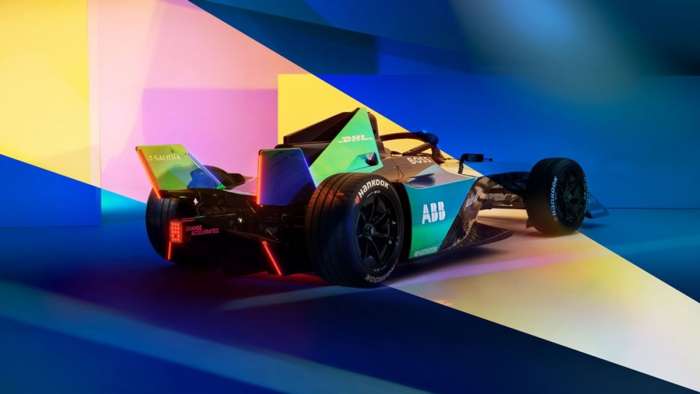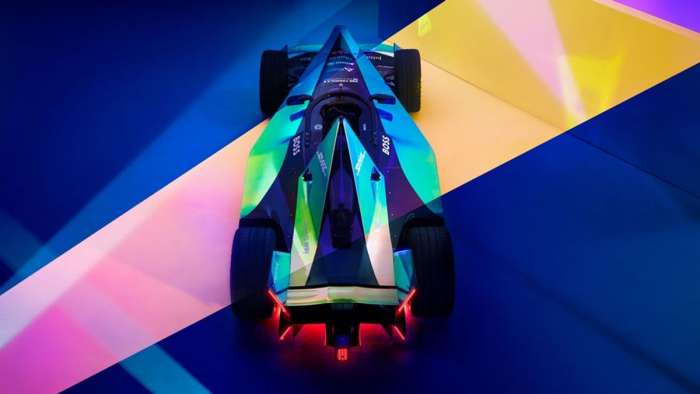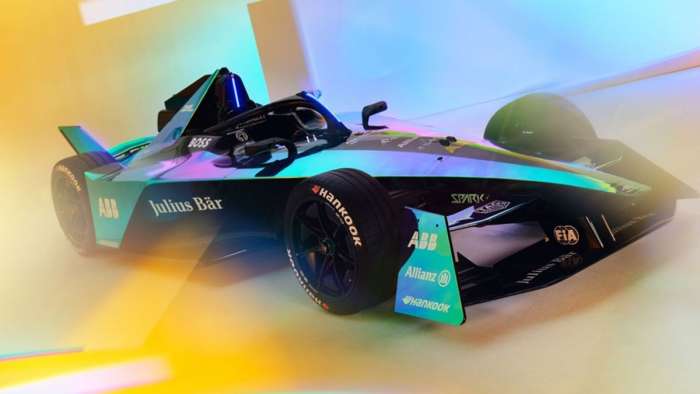Motorsport has long served as the test bed for new automotive technologies and as the world transitions to electric vehicles that responsibility is going to fall to EV series like the FIA Formula E World Championship. While the series doesn't have the clout of Formula 1 and the WRC just yet, it likely won't be long until Formula E becomes a household name like never before.
With teams fielded by Jaguar, Maserati, Nissan, Porsche, France's DS Automobiles and China's NIO, the world's automotive giants are already using the series to develop future EV technologies, and the recent launch of the Gen 3 Formula E car in Monaco shows that the racecars are producing energy efficiency levels that the internal combustion set can only dream of.
Gen 3 Formula E
Formula E's third-generation cars are set to debut in the series' ninth season and have been designed with engineers working in concert with sustainability experts to pioneer cutting-edge tech in the field of EVs. Breaking with the tradition of tweaking and perfecting aerodynamics in motorsport, the new cars instead place emphasis on software engineering with performance upgrades intended to be delivered in the form of updates to the racecars' on-board computers.

Upgrades Over Gen 2
Right off the bat the Gen 3 cars come with an upgrade that everyone can get behind: they're faster than ever before. Top speeds are promised in excess of 200 mph for the first time, and coupled with a car designed specifically for the street circuits where Formula E races around the world fans can expect some thrilling racing.
Efficiency is major headline for the Gen 3 cars, with the e-motors promising that 95% of the energy drawn from the battery will be used for propulsion. For comparison everyday ICE vehicles can only manage 30-35% thermal efficiency while modern Formula 1 engines bring that figure up to around 50%, meaning that half the fuel burned goes to waste in the form of heat and frictional losses.
Formula E says that roughly 40% of the energy used by the Gen 3 cars over a race distance will come from regenerative braking and they've done away with rear hydraulic brakes altogether because the front discs plus the regen are up to the task.
In addition to the 350kW motor on the rear axle Gen 3 cars will get a 250kW one up front, making them the first FIA Formula cars with all-wheel drive (not counting some brief experiments in F1) with a total of 600kW or around 800 horsepower available under the driver's right foot.

Ultra-Fast Charging
Charging's another area where the Gen 3 cars advance the species, with the sport's governing body promising speeds of 600 kWh far exceeding the 350kWh fastest chargers that are commercially available today. If today's fastest chargers can add 200 miles of range to a Lucid Air in about 15 minutes, imagine how easy charging will be when Formula E's 600kWh units make their way to the public. One day in the not-too-distant future charging your electric car will take the same amount of time as stopping for gas does today and we can't wait to see it happen.

Sustainability
Supporting all that performance is the Gen 3 car's focus on sustainability, which has been a mainstay of the series from day one and advances further with the latest generation. With every component and consumable thought about from a life-cycle point of view, the new cars lean more than ever on natural materials and recycling in keeping with Formula E's net-zero values.
Related Story: Formula E Tests World's Fastest EV Chargers In Italy
The minerals used for the batteries are to be mined sustainably, with the cells being reused and recycled after their racing days are done. Linen and recycled carbon fiber harvested from crushed up Gen 2 cars is used to make the bodywork, while natural rubber and fibers will make up 26% of the Gen 3's tires. All those tires will be recycled after use, naturally.
“Both technologically and environmentally, Gen3 sets new standards in the sport. The FIA and Formula E development teams have done a superb job, and I thank them for their hard work on this project. I am delighted to see so many leading manufacturers already signed up to the championship’s next era and await Gen3’s competitive debut in Season 9 with great anticipation.” - Mohammed Ben Sulayem, FIA President
Season 9 of the FIA Formula E World Championship begins in January 2023.
Related Story: Koenigsegg's "Quark" Electric Motor Weighs 63 Pounds, Makes 335 Horsepower
Images by Formula E licensed by CC BY 2.0.
James Walker is an Automotive Journalist at Torque News focusing on Lucid Motors. If it's got wheels he's interested, and he's looking forward to seeing what kind of cars the EV revolution brings us. Whether it's fast, slow, new, or old, James wants to have a look around it and share it in print and on video, ideally with some twisty roads involved. You can connect with James on Twitter, Instagram, and LinkedIn.












